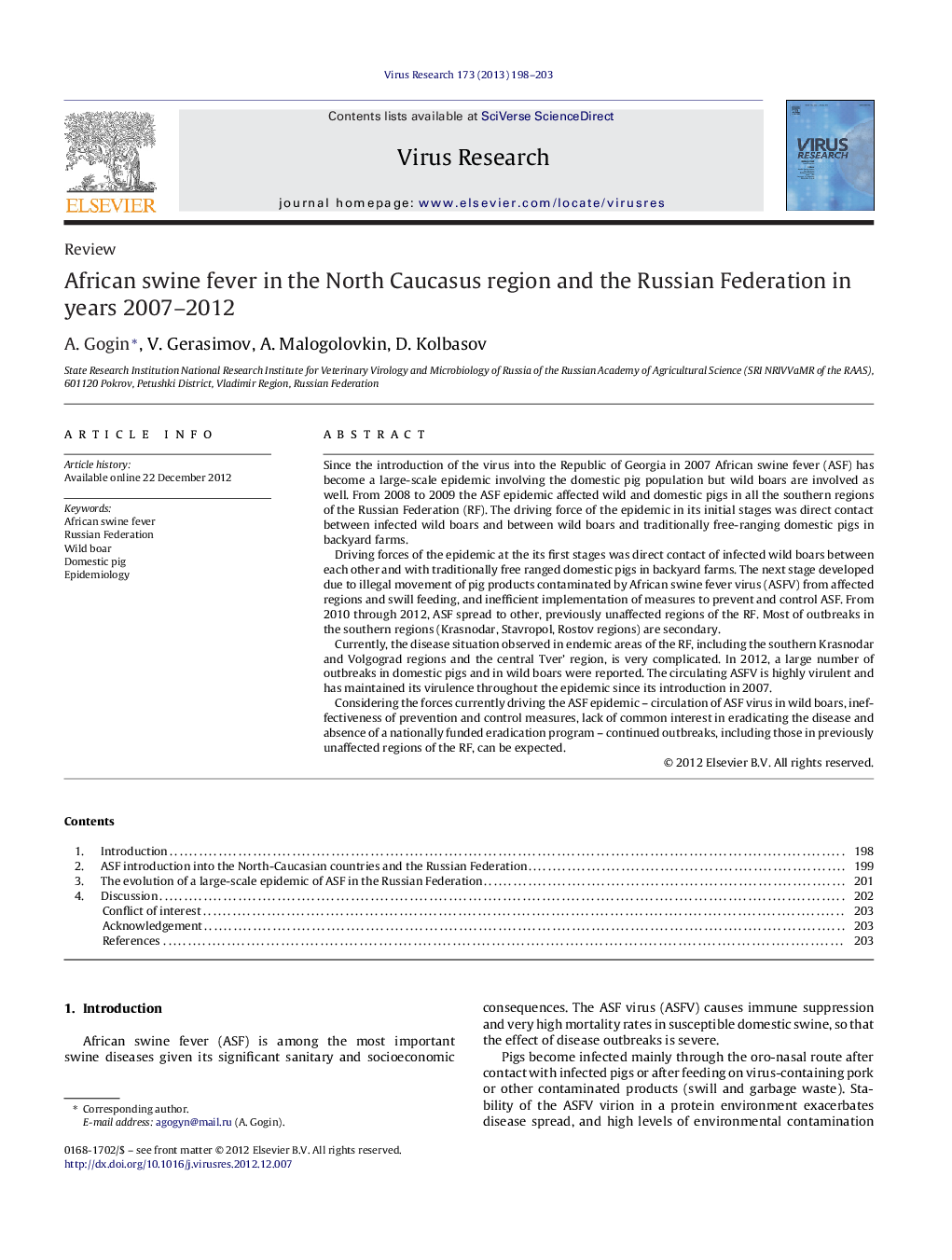| Article ID | Journal | Published Year | Pages | File Type |
|---|---|---|---|---|
| 3428805 | Virus Research | 2013 | 6 Pages |
Since the introduction of the virus into the Republic of Georgia in 2007 African swine fever (ASF) has become a large-scale epidemic involving the domestic pig population but wild boars are involved as well. From 2008 to 2009 the ASF epidemic affected wild and domestic pigs in all the southern regions of the Russian Federation (RF). The driving force of the epidemic in its initial stages was direct contact between infected wild boars and between wild boars and traditionally free-ranging domestic pigs in backyard farms.Driving forces of the epidemic at the its first stages was direct contact of infected wild boars between each other and with traditionally free ranged domestic pigs in backyard farms. The next stage developed due to illegal movement of pig products contaminated by African swine fever virus (ASFV) from affected regions and swill feeding, and inefficient implementation of measures to prevent and control ASF. From 2010 through 2012, ASF spread to other, previously unaffected regions of the RF. Most of outbreaks in the southern regions (Krasnodar, Stavropol, Rostov regions) are secondary.Currently, the disease situation observed in endemic areas of the RF, including the southern Krasnodar and Volgograd regions and the central Tver’ region, is very complicated. In 2012, a large number of outbreaks in domestic pigs and in wild boars were reported. The circulating ASFV is highly virulent and has maintained its virulence throughout the epidemic since its introduction in 2007.Considering the forces currently driving the ASF epidemic – circulation of ASF virus in wild boars, ineffectiveness of prevention and control measures, lack of common interest in eradicating the disease and absence of a nationally funded eradication program – continued outbreaks, including those in previously unaffected regions of the RF, can be expected.
► ASF was first reported in the Caucasus in 2007 and in the Russian Federation in wild boars in Chechnya in November 2007. ► The involvement of domestic pigs in 2008 was an important step toward the disease becoming endemic in North Caucasus region. ► In 2010–2012 ASF spread widely and established in central RF, with sporadic incursions into the north-western European Russia. ► The spread and endemic establishment of ASF is ascribed to circulation of virus in the wild boar population. ► Other causes were ineffective prevention and control, and lack of a centralized and nationally funded control plan.
